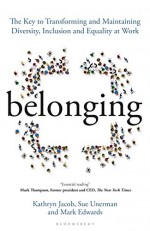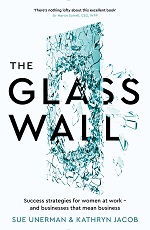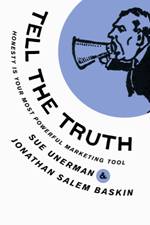 “Partnerships” are routine considerations for our industry. They are not routine to deliver however.
“Partnerships” are routine considerations for our industry. They are not routine to deliver however.
First off, they require some definition. People mean different things by them. Is a simple badging of a sponsorship a partnership? If we work collaboratively with content creators aren’t we in partnership? Or is a true media partnership one where unique content is created by the content creator (media owner, publisher, influencer etc) specifically for a brand?
This last option is especially a tough one to deliver. The objective, to create content that will uniquely promote the brand in the tone of voice of the publisher, must deliver not just added value to the marketing effort, but also to the consumers (readers, viewers, listeners etc) of the publisher.
These are the partnerships that we love, the winners of awards and the real deliverers of added value.
They can be hard work, compared for example with planning adspace in the right places which will be filled by advertising, with one clear message, created carefully to run in all the media booked.
The human effort involved can be heavy. One situation springs to mind, from many years ago, when a hair styling brand took the outside back cover of some selected women’s magazines and re-styled the front cover model’s hair. This ad looked and felt like the front cover, but with a different hairstyle. The good news was that it drove distribution and instore presence. It only ran for one campaign however. The reason was that the effort to create multiple different images felt unjustifiable. Not in terms of cost (that was factored into the media buy) but in terms of sheer effort for the client. Signing off each image for each issue of each magazine was high stakes (compared with the single image that they traditionally ran), and managing internal stakeholders required much more time than normal.
When reviewing the project all the hard kpis (key performance indicators) were successful. The stakes just felt emotionally too high for it to be repeated. The client involved said to the planner on the account: “I loved the project, it was the right thing to do. But I am never, ever going to do it again. I had sold in the idea that running magazine specific copy was better than running one single ad campaign. For two weeks, as I was attending shoots with each mag, my boss kept asking me: “Are you sure?” My answer was always yes, but it was just too stressful”.
This project was many years ago, and of course there are much better ways of working and proper project management in play today. But a good partnership will usually still require more effort than running one brand campaign. Is it worth it?
This has been a difficult question to answer. Until now. MediaCom’s new econometric study into the value of partnerships has revealed exactly how much the extra effort in delivering them is worth. For large and small projects.
The news is good for those who have so far just had blind faith that they are a good thing.
Media Partnerships can drive up to twice as much effectiveness for a brand campaign over and above advertising. This is not marginal gain, which might be undermined by increased human effort in terms of overall return. This is a significant leap in brand delivery.
The full research looks in detail at budget parameters, campaign duration and the specific metrics that partnerships are best at shifting, and whether it is best to run them stand alone or alongside an ad campaign.
Brand partnerships work. They are more than worth the trouble.





#ThisisSuccess
Thursday, October 26th, 2017How much are you the victim of SAD? The time shift in late October obviously means more darkness, sooner. Shortly the time will arrive when you may leave for work in the darkness, return home in the darkness, and if you’re in meetings all day, or there’s gloomy weather, you won’t see the sun for weeks, across the UK and most of northern Europe at least. Should you find your mood to be irrationally gloomy too, you might have a dose of Seasonal Affective Disorder. Then you may find it helpful to acquire an artificial way of topping up the sun via a lamp, or a swift holiday somewhere where they still see the sun.
There are other ways to ensure you are smiling at work. Earlier this month Style Magazine published a new point of view of happiness at work.
Being an activist increases job satisfaction. Solitaire Townsend, author of “The Happy Hero”, tells Style that those who do start campaigns for good at work find their lives: “improve in unimaginable ways. You will discover a self-confidence you never thought possible. Heroic actions will improve your health, resilience and relationships, and will even help you to live longer….it will even boost your sex life”.
Increasingly more and more people would consider that happiness at work is a key factor in success at work. Given that we spend more time at work than we do doing anything else except sleeping then the answer to a question about what everyday success is surely must include a good day at work. However fulfilling your day job is, having a mission to make not just the job better but the world better can enhance your working life. Since the publication of The Glass Wall, success strategies for women at work and businesses that mean business, I have felt a small part of a campaign for better diversity that extends across our industry, across every institution within the UK and indeed across the planet.
My co-author Kathryn Jacob and I have been speaking at over 70 gigs since publication. We’ve been trying to help to smash that Glass Wall: the invisible barrier between women and the promotion to senior management that they often deserve but don’t get. We haven’t yet succeeded. Sometimes it feels as though our industry has been going backwards instead of improving. On the other hand we know we’re helping some people. One woman recently wrote that we’d significantly helped her settle into a new job. We’ve contributed to a campaign that has only strengthened over the last 12 months. This does feel good; this does feel like success.
You’ll need to find your own area of activism of course, and you’ll need to work for an employer that puts people first and encourages you to follow that cause.
There’s many ways to challenge for change at work. It may be that your interests lie in making your team the most cohesive that it can be. You might want to make sure every bit of paper and every coffee cup is recycled. It might be that you can introduce your management to the idea that the business should not only be good for its shareholders but also be for good in the world. Whatever success looks like for you, you should go for it, without delay. It will make you happy. Have a good day today.
Posted in MediaComment | No Comments »